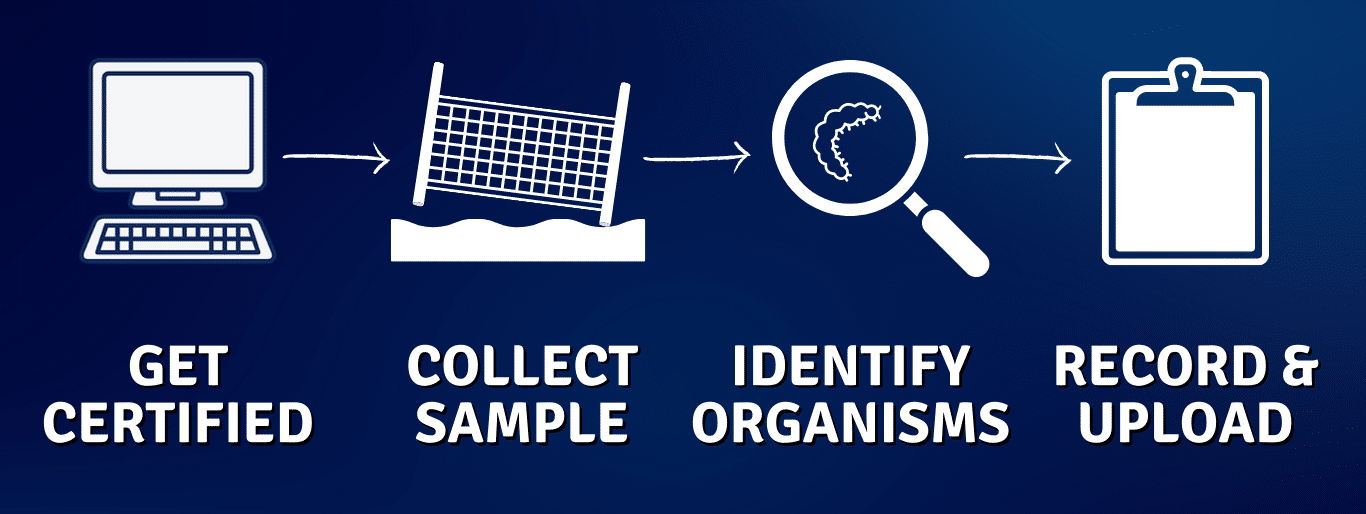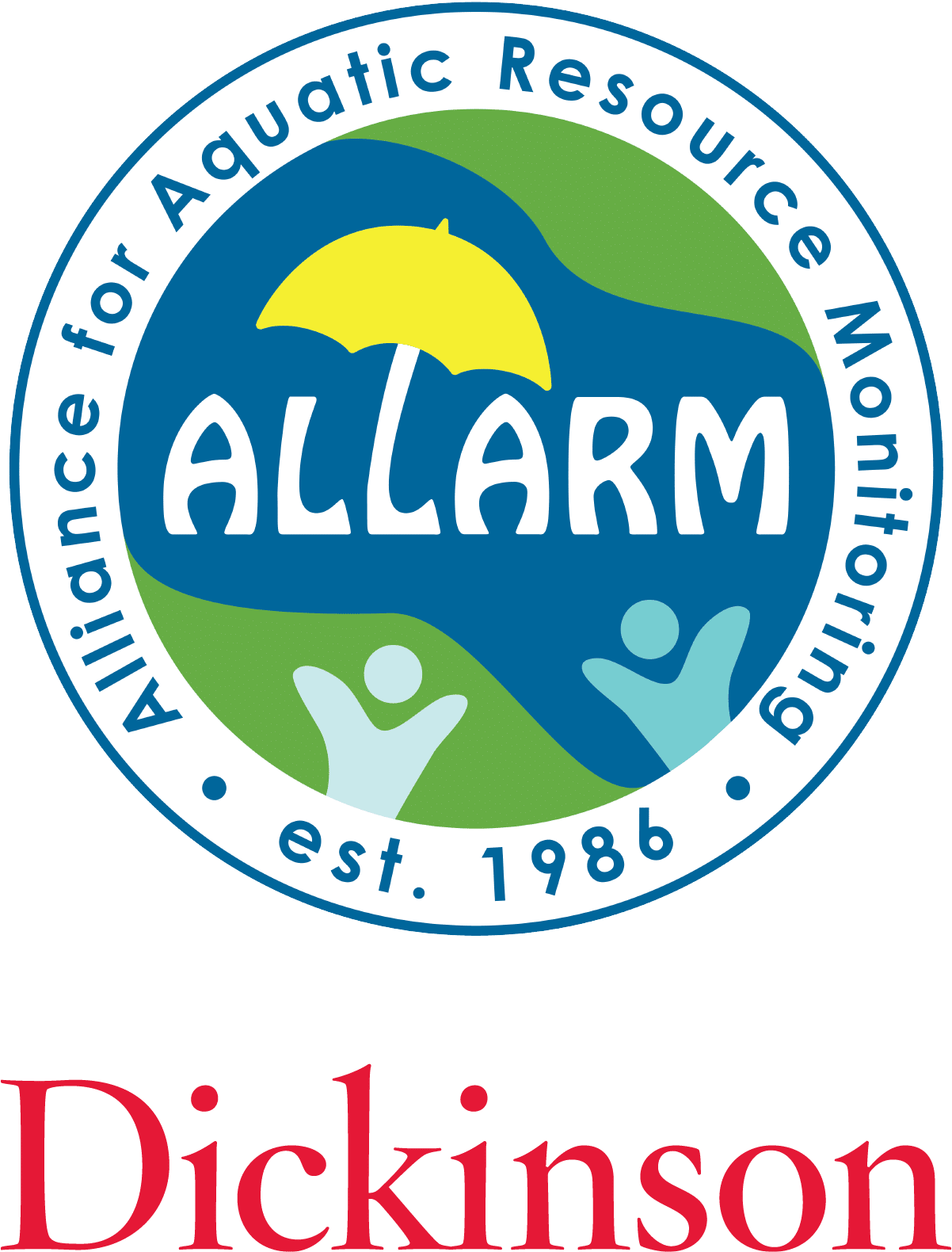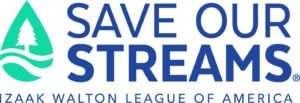Tier 1 Benthic Monitoring
Tier 1 Benthic Monitoring
Tier 1 benthic macroinvertebrate monitoring groups collect, identify, and sort benthic macroinvertebrates from the stream. Samples are collecting using kick nets in either rocky bottom or muddy bottom streams. The organisms collected are then identified and sorted by order, with some family level identification, then counted to calculate a stream health score.

Monitoring Timelines
Benthic macroinvertebrates requires participating monitoring groups to take into account the temporal variations of the organisms at their site. Macroinvertebrate numbers naturally decline during summer and increase in winter. To capture a consistent snapshot of the macroinvertebrate populations at a site, sampling should occur in spring and fall.
Service Providers
The Tier 1 Benthic Monitoring service providers are separated by watershed location. The upper watershed’s Alliance for Aquatic Resources Monitoring at Dickinson College (ALLARM) provides training and resources for individuals through their Stream Team program in Pennsylvania and New York. The lower watershed’s service provider, Izaak Walton League of America, provides training and resources through their Virginia Save Our Streams program in D.C., Delaware, Maryland, West Virginia, and Virginia.
More information about the specific protocols to follow for your region of watershed can be found linked below.
Data Use
Tier 1 benthic data can be used by a variety of individuals and organizations ranging from local communities to state agencies depending on their water quality data goals. Typically the uses for Tier 1 data include: education, environmental health screening, targeting of management actions, and baseline stream health assessment.


